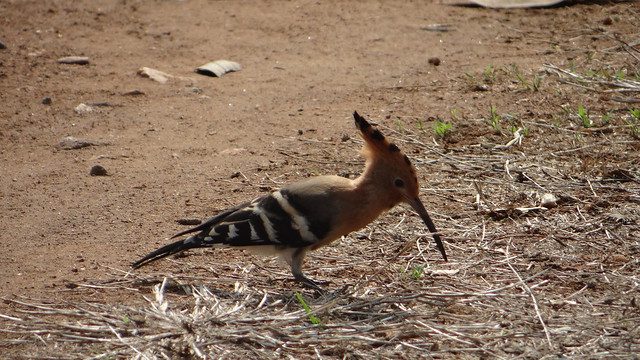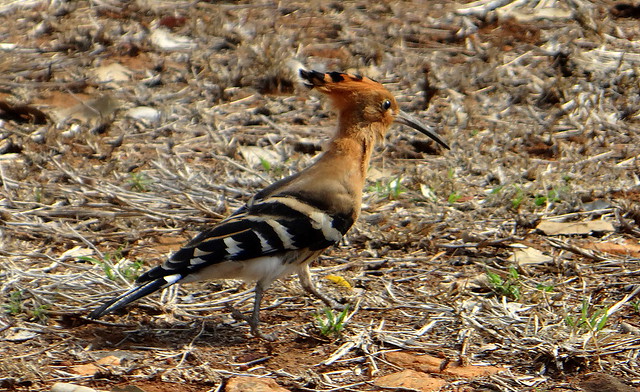The Hoopoe, Valley School, 110514
May 11, 2014
The
was called the “Common Hoopoe”, but alas, it is no longer that common a bird. However, we are lucky enough to be able to see them once in a while, in the outskirts of Bangalore. This morning, as 15 of us went to see what we could in the Valley School area, this beautiful bird was the last sighting before we left…a fitting finale to a very enjoyable morning.
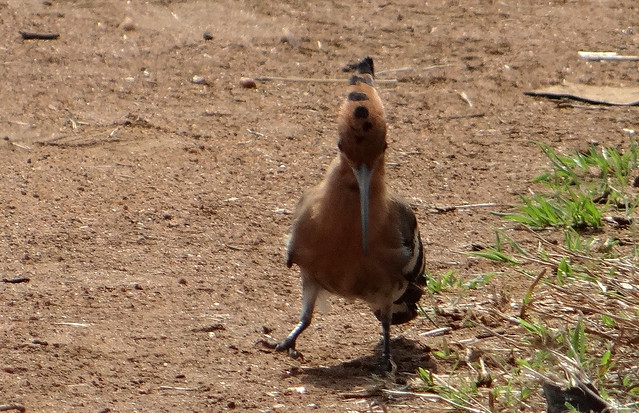 The call is typically a trisyllabic oop-oop-oop, which gives rise to its English and scientific names, although two and four syllables are also common.
The call is typically a trisyllabic oop-oop-oop, which gives rise to its English and scientific names, although two and four syllables are also common.
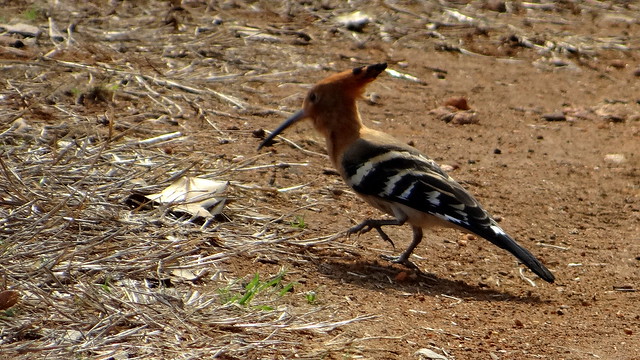 Most European and north Asian birds migrate to the tropics in winter. The African populations are sedentary year-round.
Most European and north Asian birds migrate to the tropics in winter. The African populations are sedentary year-round.
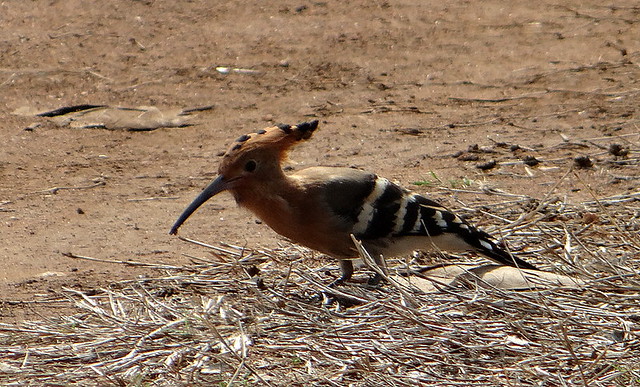 The Hoopoe has two basic requirements in its habitat; bare or lightly vegetated ground on which to forage and vertical surfaces with cavities (such as trees, cliffs or even walls, nestboxes, haystacks, and abandoned burrows) in which to nest.
The Hoopoe has two basic requirements in its habitat; bare or lightly vegetated ground on which to forage and vertical surfaces with cavities (such as trees, cliffs or even walls, nestboxes, haystacks, and abandoned burrows) in which to nest.
 The diet of the Hoopoe is mostly composed of insects, although small reptiles, frogs and plant matter such as seeds and berries are sometimes taken as well. It is a solitary forager which typically feeds on the ground.
The diet of the Hoopoe is mostly composed of insects, although small reptiles, frogs and plant matter such as seeds and berries are sometimes taken as well. It is a solitary forager which typically feeds on the ground.
 The diet of the Hoopoe includes many species considered to be pests by humans; for example the pupae of the processionary moth, a damaging forest pest.
Hoopoes are distinctive birds and have made a cultural impact over much of their range. They were considered sacred in Ancient Egypt, so they were "depicted on the walls of tombs and temples". They achieved a similar standing in Minoan Crete. Theywere seen as a symbol of virtue in Persia. They were thought of as thieves across much of Europe and harbingers of war in Scandinavia. Also, in Estonian tradition the Hoopoes are strongly connected with death and the underworld, their song is seen as a forebode of death for many a people or cattle.The Hoopoe is the king of the birds in the Ancient Greek comedy The Birds by Aristophanes.
...and....The Hoopoe was chosen as the national bird of Israel in May 2008!
When we found that this bird, which has lived amongst humans for so long, was not at all disturbed by our presence, we slowly, and carefully, fanned around it, without disturbing its foraging behaviour. I took this video to show how, sometimes, a group can photograph a bird from fairly close range, without alarming or disturbing it.
The diet of the Hoopoe includes many species considered to be pests by humans; for example the pupae of the processionary moth, a damaging forest pest.
Hoopoes are distinctive birds and have made a cultural impact over much of their range. They were considered sacred in Ancient Egypt, so they were "depicted on the walls of tombs and temples". They achieved a similar standing in Minoan Crete. Theywere seen as a symbol of virtue in Persia. They were thought of as thieves across much of Europe and harbingers of war in Scandinavia. Also, in Estonian tradition the Hoopoes are strongly connected with death and the underworld, their song is seen as a forebode of death for many a people or cattle.The Hoopoe is the king of the birds in the Ancient Greek comedy The Birds by Aristophanes.
...and....The Hoopoe was chosen as the national bird of Israel in May 2008!
When we found that this bird, which has lived amongst humans for so long, was not at all disturbed by our presence, we slowly, and carefully, fanned around it, without disturbing its foraging behaviour. I took this video to show how, sometimes, a group can photograph a bird from fairly close range, without alarming or disturbing it.
We bade goodbye as as it walked along peacefully in the sunshine:
A little later, off it flew…and we walked on with great satisfaction at having seen, and observed, this bird for a good while!
for my FB album


